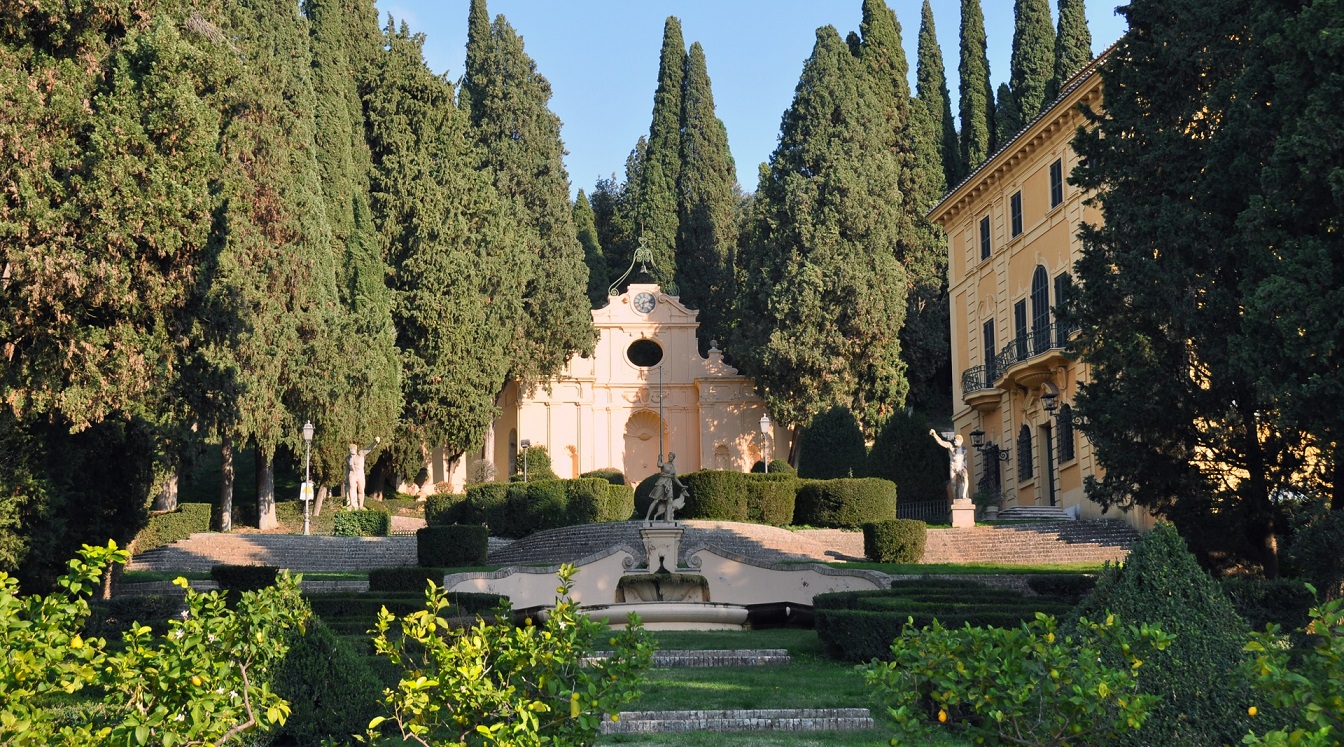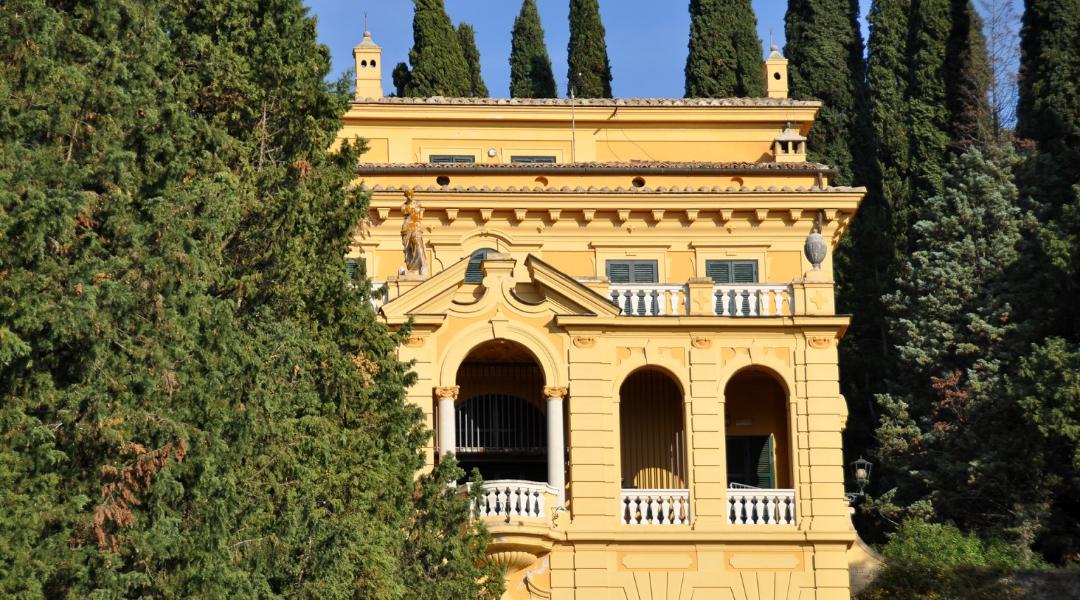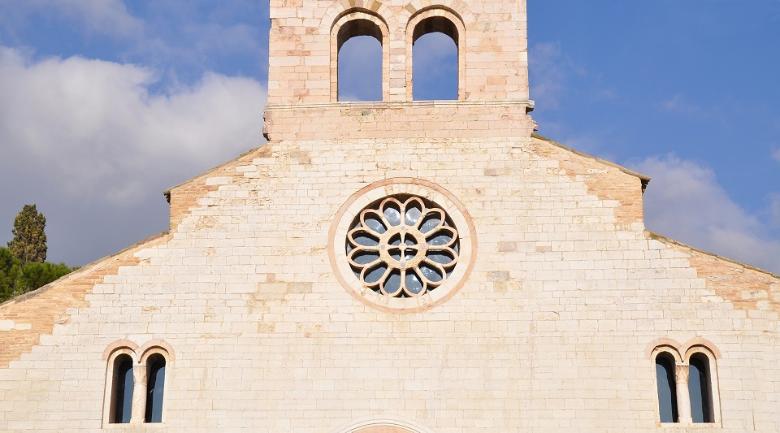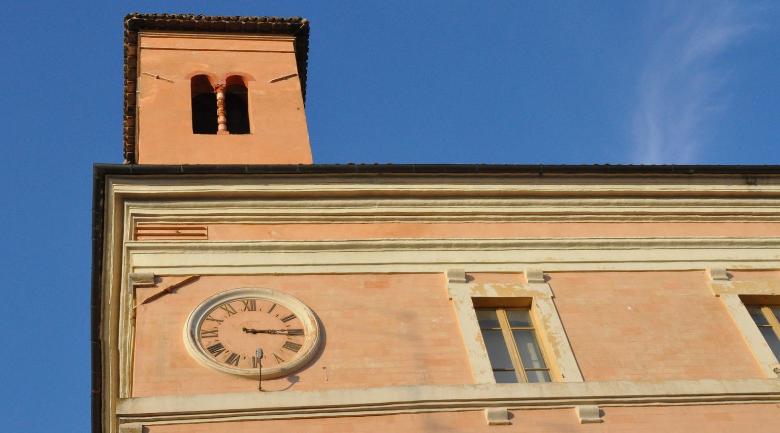Villa Fidelia - Spello
The complex of Villa Fidelia (or Villa Costanzi) is located at the foot of a hill along the motorway in the territory of Spello. Built in the 16th century by the Urbani family on the remains of a sanctuary belonging to a sacral ensemble of a classical epoch (4th century), it passed in the 18th century to Donna Teresa Pamphili Grillo who transformed it completely.
The plan of the villa, strongly influenced by the pre-existing Roman construction, keeps the same layout and plan, even if the current complex of Villa Fidelia no longer includes the southern extremity, which now belongs to the missionary sisters of Egypt.
The main building has a rectangular plant, is on three floors of which only three are above the ground because of the slope of the terrain. The facades are rich in Baroque and neo-classical decorations; they are framed by pilasters and flat-embossed pilasters intersecting with the string-course bands, windows with mixtilinear frames, broken pediments and framings.
The main building has a rectangular plant, is on three floors of which only three are above the ground because of the slope of the terrain. The facades are rich in Baroque and neo-classical decorations; they are framed by pilasters and flat-embossed pilasters intersecting with the string-course bands, windows with mixtilinear frames, broken pediments and framings.


































.png/1466f1b0-6b0b-66c3-d028-c44e27836a4a?width=780)

.jpeg/26712e88-9665-3ae2-a85e-3bd2b38b8a93?width=780)
